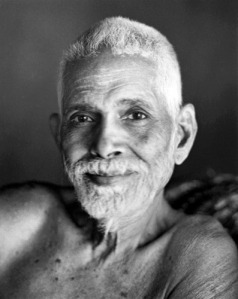

Chapter 3 – The jnani
1 How can a jnani function without any individual awareness of consciousness?
3 How does he perceive the world? Does he perceive the world at all?
The hidden premise behind all such questions is the belief that there is a person (the jnani) who experiences a state he calls the Self. This assumption is not true. It is merely a mental construct devised by those who have not realized the Self (ajnanis) to make sense of the jnani’s experience.
Even the use of the word jnani is indicative of this erroneous belief since it literally means a knower of jnana, the reality. The ajnani uses this term because he imagines that the world is made up of seekers of reality and knowers of reality; the truth of the Self is that there are neither jnanis nor ajnanis, there is only jnana.
Sri Ramana pointed this out both directly and indirectly on many occasions, but few of his questioners were able to grasp, even conceptually, the implications of such a statement. Because of this he usually adapted his ideas in such a way that they conformed to the prejudices of his listeners.
In most of the conversations in this chapter he accepts that his questioners perceive a distinction between the jnani and the ajnani, and, without challenging the basis of that assumption, he assumes the role of the jnani and attempts to explain the implications of being in that state.
Q: Then what is the difference between the baddha and the mukta, the bound man and the one liberated?
A: The ordinary man lives in the brain unaware of himself in the Heart. The jnana siddha [jnani] lives in the Heart.
When he moves about and deals with men and things, he knows that what he sees is not separate from the one supreme reality, the Brahman which he realized in the Heart as his own Self, the real.
Q: What about the ordinary man?
A: I have just said that he sees things outside himself. He is separate from the world, from his own deeper truth, from the truth that supports him and what he sees. The man who has realized the supreme truth of his own existence realises that it is the one supreme reality that is there behind him, behind the world. In fact, he is aware of the one, as the real, the Self in all selves, in all things, eternal and immutable, in all that is impermanent and mutable.
Q: What is the relation between the pure consciousness realized by the jnani and the ‘I am’- ness which is accepted as the primary datum of experience?
A: The undifferentiated consciousness of pure being is the Heart or hridayam, which is what you really are. From the Heart arises the ‘I am’-ness as the primary datum of one’s experience. By itself it is completely pure [suddha-sattva] in character. It is in this form of pristine purity [suddha- sattva-swarupa], uncontaminated by rajas and tamas [activity
and inertia], that the ‘I’ appears to subsist in the jnani.
Q: In the jnani the ego subsists in the pure form and therefore it appears as something real. Am I right?
A: The appearance of the ego in any form, either in the jnani or ajnani, is itself an experience.
But to the ajnani who is deluded into thinking that the waking state and the world are real, the ego also appears to be real. Since he sees the jnani act like other individuals, he feels constrained to posit some notion of individuality with
You must be logged in to post a comment.